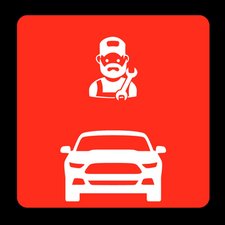Ford Mechanic here:
Seeing as you've replaced the control and activating components, have you considered the circuitry components?
Try inspecting Fuse J in the Battery Junction box [20A Fuse], for being blown, near blown, burnt, or shorted. If that is ok, then you would want to next inspect the Starter Relay for operation. [It's located at the Front Right Fender Apron, behind the Battery]. with your hand on the relay case, have a helper turn the key to the starting position and feel for the relay to operate. If both are ok, then with a digital multimeter, you'll want to verify standing battery voltage is above ~12.5-12.8V. Then verify the voltage at the solenoid, on both contacts. One contact, without starting, should be ~12.8V, while the other should be 0V. while in the start position, make sure both contacts read 11V+.
If they do, measure again at the starter motor, without having the key in the start position, the voltage posts on the motor. Key on position, should be 0V, and key start position should be 11V+.
You should also measure the resistance to ground from the starter case to the chassis, as well as the solenoid ground post to the chassis, to verify that it's continuity is less than 5 Ohms.
Finally, if you've verified that there's no voltage making it to the starter motor, it's time to eliminate which component in the chain is stopping the voltage. [Battery>Ignition Switch>PCM>Start Fuse>Start Relay>Start Solenoid>Start Motor] is your chain of components the voltage must pass through before it will start the truck. you'll want to check the continuity between these, but seeing as you know you have a good switch, motor, battery, and solenoid, theres no need to dig into these components, rather, just the need to check the circuitry between them.
So you'll start by measuring the continuity between the Battery and the "Always Hot" side of the solenoid [make sure you disconnect the negative battery cable prior to doing Ohms testing] for it to be <5 Ohms. If that's ok, Measure Ohms between the "START" Side of the Solenoid and the starter Motor. [these first to check the easiest first]. If that's ok, Measure the second Positive Cable from the battery to the Start Relay for the same Ohms readout. Next, there should be both a Red/Lt. Blue Wire, and a Yellow Wire going to the relay. Test the continuity between the fuse pin and the Red/Lt.Blue wire. Then test the Continuity from the other Fuse Pin and the end of the Yellow wire. [Yellow wire has a Fusible Link connection between the fuse and the relay. this is a possible failure point as well, but this will test for that.]
Let me know if any questions. I hope I could help. Here is a Diagram for the circuit.
Diagram



 2
2